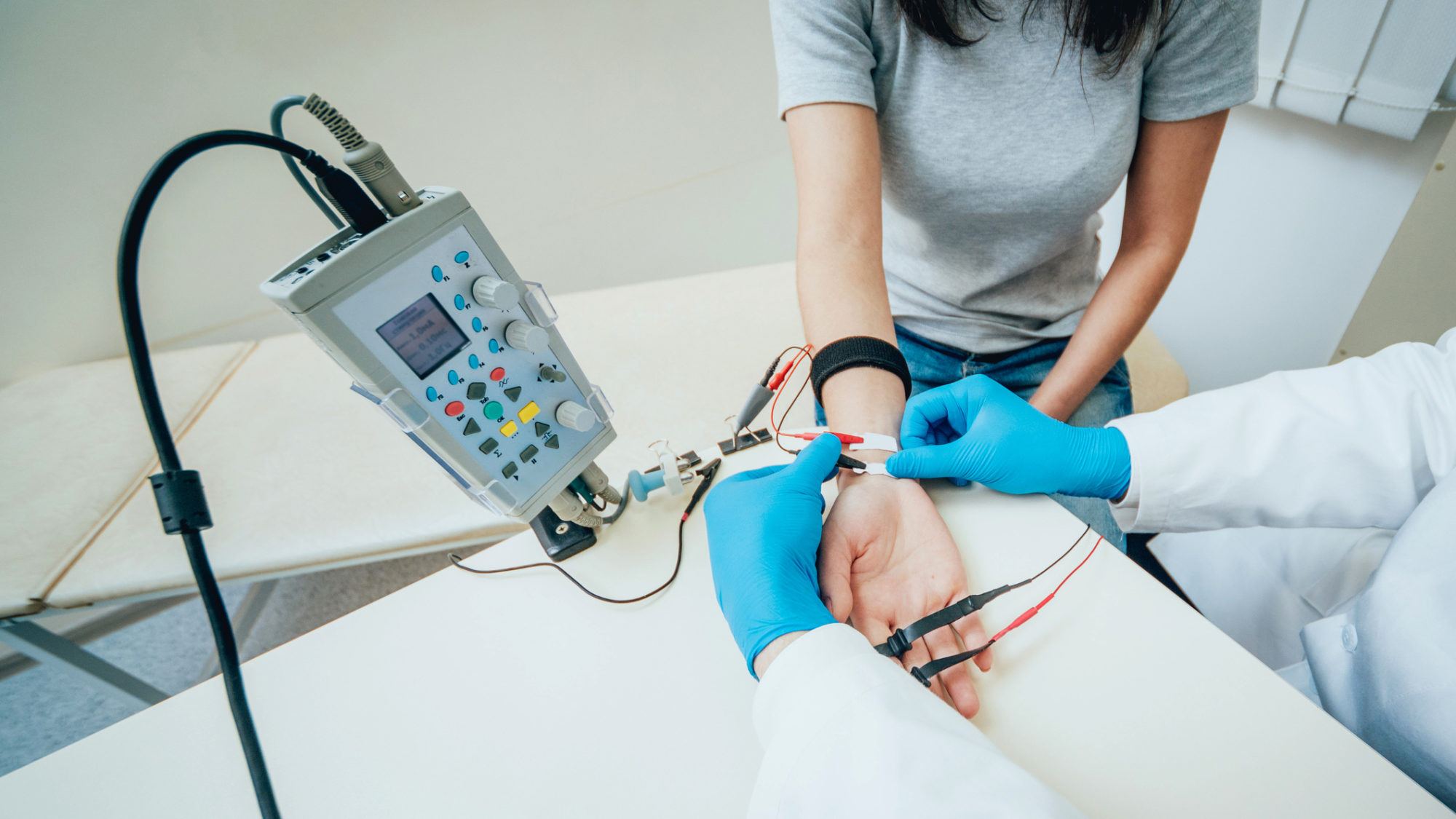
Electroencephalography (EEG)
Electroencephalography (EEG)
Electroencephalography (EEG) is a diagnostic test that measures the electrical activity of the brain.
During EEG, small metal discs called electrodes are pasted to the scalp to detect the tiny electrical signals produced by brain cells when they communicate. These signals are sent to a recording machine, which changes the signals into patterns that can be seen on a monitor or drawn on paper.
The test takes about 90 minutes, although in certain situations your doctor may request a longer recording.

What is Electroencephalography (EEG) used for?
Electroencephalography (EEG) can help doctors diagnose many disorders, including:
- Epilepsy and other seizure disorders
- Brain tumors
- Head injuries
- Brain dysfunction due to various causes (encephalopathy)
- Inflammation of the brain (encephalitis)
- Strokes
- Sleep disorders, such as narcolepsy
- Dementia
- Headaches
- Dizziness
- Psychiatric illnesses
- Degenerative brain diseases
- Irreversible brain death
EEG may also be used to monitor the brain during certain types of brain surgery.
Am I a good candidate for Electroencephalography (EEG)?
You may be a good candidate for electroencephalography (EEG) if you are having seizures or other symptoms of a neurological disorder. EEG is safe and painless.



